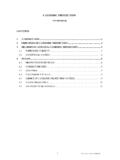Transcription of Corrosion Protection of Steel Bridges
1 Steel Bridge Design HandbookNovember Department of TransportationFederal Highway AdministrationCorrosion Protection of Steel BridgesPublication No. FHWA-IF-12-052 - Vol. 19 Archived Notice This document is disseminated under the sponsorship of the Department of Transportation in the interest of information exchange. The Government assumes no liability for use of the information contained in this document. This report does not constitute a standard, specification, or regulation. Quality Assurance Statement The Federal Highway Administration provides high-quality information to serve Government, industry, and the public in a manner that promotes public understanding. Standards and policies are used to ensure and maximize the quality, objectivity, utility, and integrity of its information. FHWA periodically reviews quality issues and adjusts its programs and processes to ensure continuous quality improvement. ArchivedSteel Bridge Design Handbook: Corrosion Protection of Steel Bridges Publication No.
2 FHWA-IF-12-052 - Vol. 19 November 2012 ArchivedArchivedTechnical Report Documentation Page 1. Report No. FHWA-IF-12-052 - Vol. 19 2. Government Accession No. 3. Recipient s Catalog No. 4. Title and Subtitle Steel Bridge Design Handbook: Corrosion Protection of Steel Bridges 5. Report Date November 2012 6. Performing Organization Code 7. Author(s) Robert Kogler (Rampart, LLC) 8. Performing Organization Report No. 9. Performing Organization Name and Address HDR Engineering, Inc. 11 Stanwix Street Suite 800 Pittsburgh, PA 15222 10. Work Unit No. 11. Contract or Grant No. 12. Sponsoring Agency Name and Address Office of Bridge Technology Federal Highway Administration 1200 New Jersey Avenue, SE Washington, 20590 13. Type of Report and Period Covered Technical Report March 2011 November 2012 14. Sponsoring Agency Code 15. Supplementary Notes This module was edited in 2012 by HDR Engineering, Inc., to be current with the AASHTO LRFD Bridge Design Specifications, 5th Edition with 2010 Interims.
3 16. Abstract Corrosion is a serious threat to the long-term function and integrity of a Steel bridge. Structural Steel will corrode if left unprotected or inadequately protected from the natural environment. This Corrosion can take the form of general uniform thickness loss or concentrated pitting depending on exposure to the environment and the Steel design detail in question. Bridge designers should view Corrosion as a long term threat to the integrity of the bridge structure, and is a critical consideration that must be addressed in a rational manner during the design process. While there are several proven strategies for Corrosion Protection of Steel Bridges , there is no universal solution. The proper system must be chosen to accommodate cost, fabrication and productivity, and long term performance and maintenance. Additionally, each Corrosion Protection system must be selected based on the anticipated exposure of the structure to corrosive elements over its lifetime.
4 This module highlights the most common issues confronting bridge designers regarding Corrosion Protection and provides guidance in this area. 17. Key Words Steel Bridge, Corrosion , Corrosion Protection , Steel Coatings, Galvanization, Metalized, Weathering Steel 18. Distribution Statement No restrictions. This document is available to the public through the National Technical Information Service, Springfield, VA 22161. 19. Security Classif. (of this report) Unclassified 20. Security Classif. (of this page) Unclassified 21. No of Pages 22. Price Form DOT F (8-72) Reproduction of completed pages authorized ArchivedArchivedi Steel Bridge Design Handbook: Corrosion Protection of Steel Bridges Table of Contents FOREWORD .. 1 INTRODUCTION AND BACKGROUND .. 3 KEY ISSUES .. 5 Environment .. 5 Materials of Construction.
5 11 Coatings for Blasted Steel .. 11 Metalizing .. 13 Galvanizing .. 14 Weathering Steel .. 14 Design Detailing .. 16 Detailing .. 20 Cost .. 21 Fabrication Costs .. 22 Maintenance Painting Costs .. 22 Cost of the Coating 23 Life of Coatings .. 23 Corrosion Protection by Use of Weathering Steel .. 24 Financial Considerations .. 25 Sample 26 Results .. 27 Risk .. 28 SUMMARY .. 29 REFERENCES .. 30 Archivedii List of Figures Figure 1 Photograph of a connection severed due to Corrosion .. 3 Figure 2 Photographs of Corrosion of prestressing strands on underside of two prestressed concrete Bridges .. 4 Figure 3 Graph showing Corrosion rates for carbon and weathering Steel in various environments.. 8 Figure 4 Photograph showing heavy Corrosion of bottom flange and web due to collection of constantly wet 9 Figure 5 Photograph showing debris accumulation at a connection point.. 10 Figure 6 Photograph that shows the testing of various generically similar paint systems with wide variations in performance.
6 12 Figure 7 Photograph showing the corroded off end of a deck drain downspout. This drainage was undersized and designed with sharp angles in the down spouting. It eventually corroded out and subsequently sprays salt laden deck drainage directly onto structural Steel .. 18 Figure 8 Photograph of a girder end on a bearing below a leaking deck joint. Horizontal flange and vertical stiffeners create an excellent trap for debris and moisture.. 18 Figure 9 Photographs showing Steel directly beneath transverse and longitudinal expansion joints that have leaked corrosive runoff from the deck.. 19 Figure 10 Photograph showing the area under an open grid deck, which is acting as one large leaking joint.. 21 Figure 11 Equivalent Uniform Annual Cost Analysis for 6 Different Scenarios.. 27 Archivediii List of Tables Table 1 Corrosion Rates for Carbon Steel at Various Locations .. 7 Table 2 Estimated Maintenance Painting Costs .. 23 Table 3 Life Cycle Costing Scenarios.
7 26 Archived 1 FOREWORD It took an act of Congress to provide funding for the development of this comprehensive handbook in Steel bridge design. This handbook covers a full range of topics and design examples to provide bridge engineers with the information needed to make knowledgeable decisions regarding the selection, design, fabrication, and construction of Steel Bridges . The handbook is based on the Fifth Edition, including the 2010 Interims, of the AASHTO LRFD Bridge Design Specifications. The hard work of the National Steel Bridge Alliance (NSBA) and prime consultant, HDR Engineering and their sub-consultants in producing this handbook is gratefully acknowledged. This is the culmination of seven years of effort beginning in 2005. The new Steel Bridge Design Handbook is divided into several topics and design examples as follows: Bridge Steels and Their Properties Bridge Fabrication Steel Bridge Shop Drawings Structural Behavior Selecting the Right Bridge Type Stringer Bridges Loads and Combinations Structural Analysis Redundancy Limit States Design for Constructibility Design for Fatigue Bracing System Design Splice Design Bearings Substructure Design Deck Design Load Rating Corrosion Protection of Bridges Design Example: Three-span Continuous Straight I-Girder Bridge Design Example: Two-span Continuous Straight I-Girder Bridge Design Example: Two-span Continuous Straight Wide-Flange Beam Bridge Design Example: Three-span Continuous Straight Tub-Girder Bridge Design Example: Three-span Continuous Curved I-Girder Beam Bridge Design Example.
8 Three-span Continuous Curved Tub-Girder Bridge These topics and design examples are published separately for ease of use, and available for free download at the NSBA and FHWA websites: , and , respectively. Archived 2 The contributions and constructive review comments during the preparation of the handbook from many engineering processionals are very much appreciated. The readers are encouraged to submit ideas and suggestions for enhancements of future edition of the handbook to Myint Lwin at the following address: Federal Highway Administration, 1200 New Jersey Avenue, , Washington, DC 20590. M. Myint Lwin, Director Office of Bridge Technology Archived 3 INTRODUCTION AND BACKGROUND Corrosion is a serious threat to the long-term function and integrity of a Steel bridge.
9 Structural Steel will corrode if left unprotected or inadequately protected from the natural environment. This Corrosion can take the form of general uniform thickness loss or concentrated pitting depending on exposure to the environment and the Steel design detail in question. The designer should view Corrosion as a long term threat to the integrity of the bridge structure a critical design consideration that must be addressed in a rational manner during the design process. Corrosion is a time-based process that generally takes several years to develop deterioration significant enough to cause concern. For this reason, Corrosion is often considered an ownership or maintenance issue. While this may be true in practical terms, Corrosion is most appropriately addressed by specification of a proper Corrosion Protection system during the design phase. It has been shown that Corrosion played a significant role in the catastrophic collapse of both the Silver Bridge (Point Pleasant, WV) in 1967 and the Mianus River Bridge (Connecticut) in 1983 (1) ( 2).
10 Therefore, Corrosion is not an issue to be taken lightly by the designer. Figure 1 Photograph of a connection severed due to Corrosion . It is important to place the issue of Corrosion in perspective. Corrosion is a concern beyond Steel Bridges alone. Because reinforced concrete and prestressed concrete Bridges also employ Steel components in their designs, these Bridges are also susceptible to the effects of Corrosion . It can be reasonably argued that although Steel Bridges tend to show the outward effects of Corrosion more readily than concrete structures, Steel Bridges are inherently easier to inspect and maintain than concrete Bridges . Archived 4 Figure 2 Photographs of Corrosion of prestressing strands on underside of two prestressed concrete Bridges . While there are several proven strategies for Corrosion Protection of Steel Bridges , there is no universal solution. The proper system must be chosen to accommodate cost, fabrication and productivity, long term performance and maintenance.


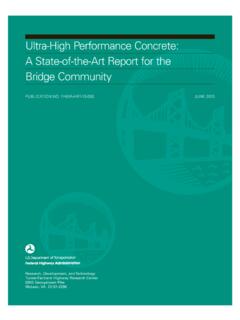
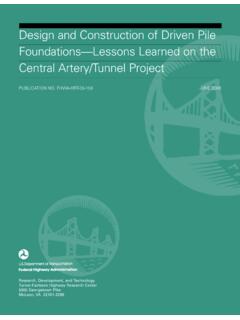

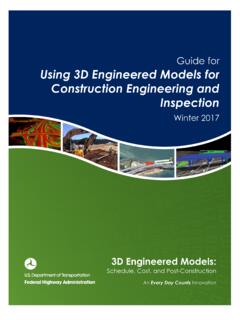




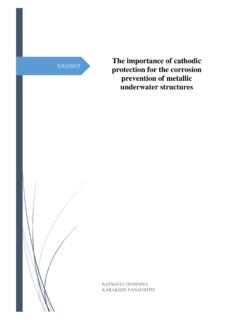

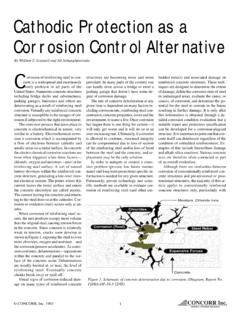
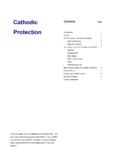
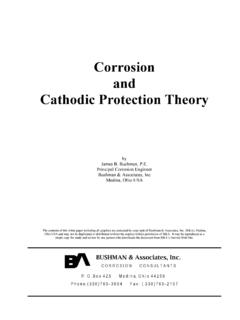



![Corrosion Protection.ppt [Read-Only] - University of Iowa](/cache/preview/1/c/f/9/2/e/d/5/thumb-1cf92ed5cf903dbf2b6cd3a840081a01.jpg)
